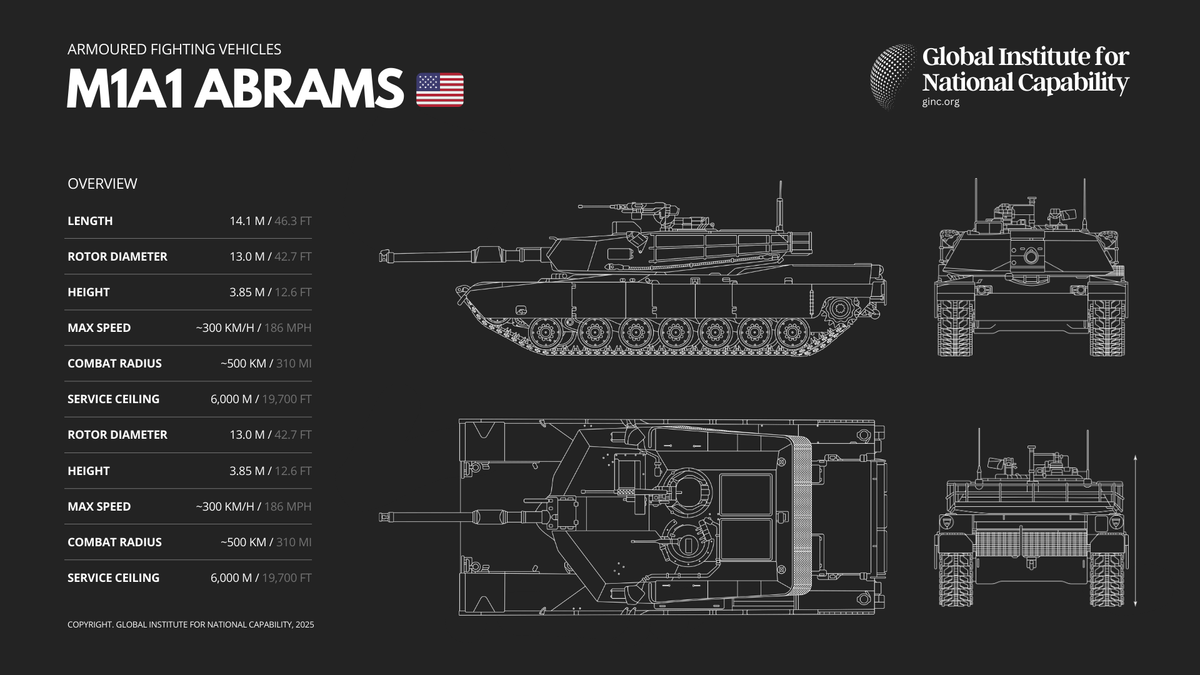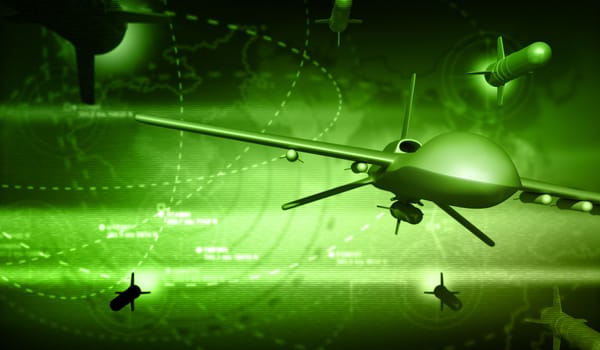M1A1 Abrams 🇺🇸

The M1A1 Abrams is one of the most iconic and capable main battle tanks (MBTs) in modern military history. Developed in the 1980s as a successor to the M60 Patton, the M1A1 is a heavily armored, fast, and lethal platform that has served as the backbone of U.S. armored forces for over four decades. Renowned for its performance in conflicts ranging from the Gulf War to Iraq and Afghanistan, the M1A1 embodies the U.S. Army’s doctrine of maneuver warfare — combining firepower, mobility, and survivability.
Built by General Dynamics Land Systems, the M1A1 was introduced in 1985 as an upgrade to the original M1 Abrams. The most significant change was the replacement of the 105mm rifled gun with a 120mm smoothbore M256 cannon, derived from the German Rheinmetall design. This increased its armor-piercing capability and allowed it to engage enemy tanks at longer ranges with greater lethality.
The M1A1 is powered by a 1,500-horsepower Honeywell AGT1500 gas turbine engine, which provides an impressive top speed of over 40 mph (67 km/h) on roads, despite the tank’s 60-ton weight. Its range is approximately 265 miles (426 km) with internal fuel, although its fuel consumption is high compared to diesel-powered counterparts. What it loses in fuel efficiency, it gains in rapid acceleration, lower noise signature, and easier start-up in cold conditions.
One of the defining characteristics of the M1A1 is its Chobham composite armor, which incorporates layers of ceramics and steel to defeat kinetic energy penetrators and shaped charges. In later upgrades, depleted uranium armor inserts were added to increase protection further. This makes the M1A1 exceptionally resilient against most anti-tank threats on the battlefield.
Inside the tank, a fire control system with laser rangefinding, thermal imaging, and computerized ballistic solutions ensures high first-round hit probability, even while moving. The tank also features a stabilized gun and commander’s independent thermal viewer, enabling effective hunter-killer tactics. While not equipped with active protection systems (APS) in its early variants, modern M1A1s have received substantial upgrades to sensors and countermeasures.
Strategically, the M1A1 played a pivotal role during Operation Desert Storm, where its performance against Soviet-era T-72 tanks in open desert combat became legendary. It could accurately engage targets beyond visual range and absorb hits that would have destroyed lighter vehicles. Its dominance in the Gulf War helped cement U.S. armored superiority for the post-Cold War era.
While newer variants like the M1A2 and the latest M1A2 SEPv3 and SEPv4 now feature enhanced electronics and survivability systems, the M1A1 remains in service across U.S. forces and allied militaries, including Egypt and Australia. Its rugged design and combat record continue to make it a formidable asset on the battlefield.
In summary, the M1A1 Abrams represents a blend of engineering excellence and combat effectiveness. As warfare evolves, so too does the Abrams, but its legacy as a dominant force in ground combat is firmly established.




